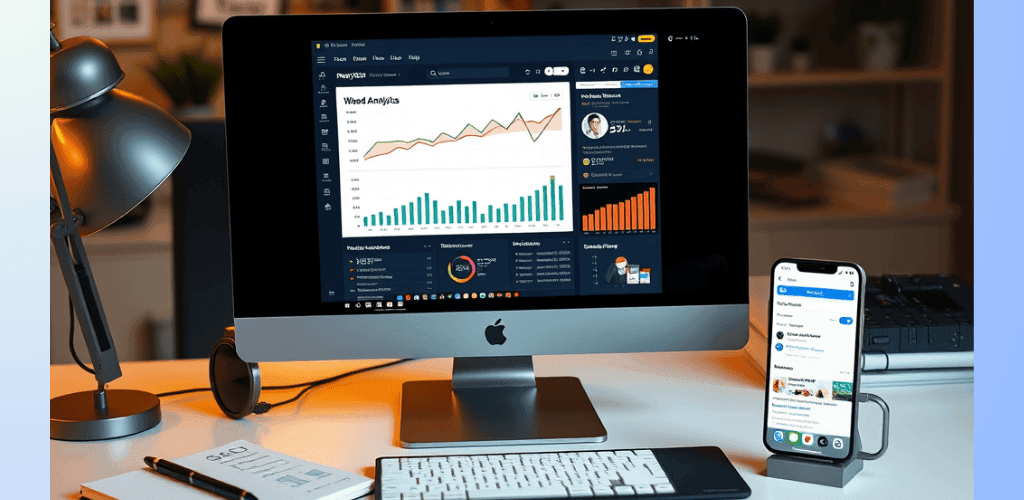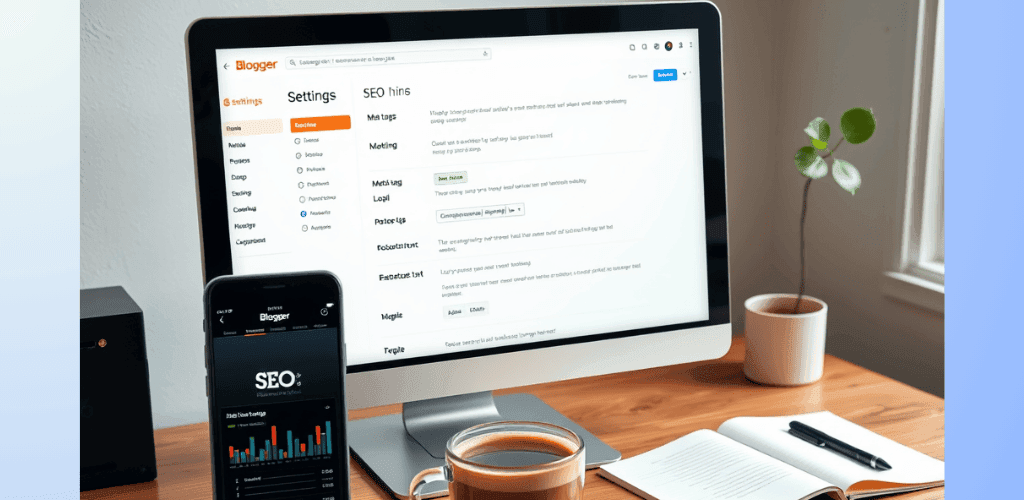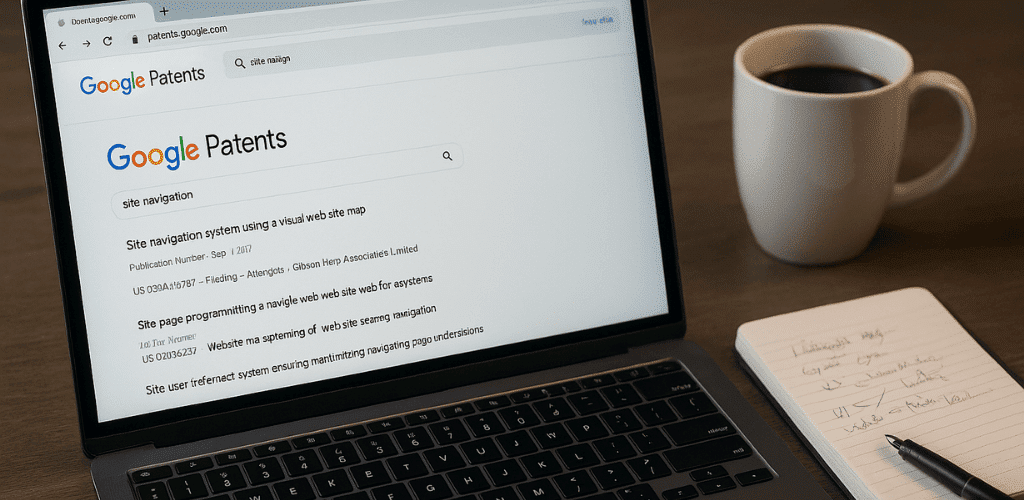Are you struggling to get your website noticed in the vast sea of online content? In today’s digital landscape, having a great website isn’t enough—you need to make sure it’s discoverable by your target audience. That’s where Search Engine Optimization (SEO) comes in, and mastering it can be the key to unlocking your online success.
Imagine your website climbing to the top of search engine results, attracting more visitors, and ultimately growing your business. But where do you start? With so many SEO for website techniques and strategies out there, it’s easy to feel overwhelmed. Don’t worry—we’ve got you covered! In this step-by-step guide, we’ll walk you through the essential elements of SEO, from understanding the fundamentals to implementing advanced tactics that will boost your website’s visibility.
Table of Contents
Understand Fundamentals of SEO for Websites

A. Define your target audience
To effectively implement SEO for website, it’s crucial to first define your target audience. Understanding who your potential customers are will help you tailor your content and optimization strategies to their needs and search behaviors.
Consider the following aspects when defining your target audience:
- Demographics (age, gender, location)
- Interests and preferences
- Pain points and challenges
- Search intent and behavior
By clearly defining your target audience, you can create content that resonates with them and addresses their specific needs, ultimately improving your website’s visibility in search results.
B. Research relevant keywords
Keyword research is a fundamental step in SEO for website. It involves identifying the search terms your target audience uses when looking for products or services related to your business. Here’s a brief overview of the keyword research process:
- Brainstorm seed keywords
- Use keyword research tools to expand your list
- Analyze search volume and difficulty
- Consider search intent behind keywords
| Keyword Type | Description | Example |
|---|---|---|
| Short-tai | General, high-volume terms | “SEO” |
| Long-tail | Specific, lower-volume phrases | “how to do SEO for small business” |
| LSI keywords | Semantically related terms | “search engine optimization” |
By selecting the right keywords, you can create content that aligns with what users are searching for, improving your chances of ranking higher in search results.
C. Analyze competitor SEO for websites
Studying your competitors’ SEO for website strategies can provide valuable insights and help you identify opportunities for improvement. When analyzing competitor websites, pay attention to:
- Content topics and formats
- Keyword usage
- On-page optimization techniques
- Backlink profiles
- User experience and site structure
This analysis can help you understand what’s working in your industry and inspire ideas for enhancing your own SEO strategy.
D. Set clear SEO goals
Establishing specific, measurable SEO goals is essential for tracking progress and guiding your optimization efforts. Some common SEO goals include:
- Increasing organic search traffic
- Improving keyword rankings
- Enhancing visibility for specific search terms
- Boosting conversion rates from organic traffic
- Reducing bounce rates
When setting goals, ensure they are aligned with your overall business objectives and use tools like Google Analytics to track your progress over time.
Now that we have covered the fundamentals of understanding SEO, including defining your target audience, researching keywords, analyzing competitors, and setting goals, we’ll move on to the next crucial step: optimizing on-page elements. This will involve implementing the insights gained from our foundational work to improve your website’s visibility and performance in search engine results.
Optimize On-Page Elements

Now that we have covered the fundamentals of SEO for website, let’s dive into optimizing on-page elements, which is crucial for improving your website’s visibility and relevance in search engine results.
A. Craft compelling title tags
Title tags are essential for conveying your page’s purpose to both search engines and users. To create effective title tags:
- Make them unique and descriptive
- Include relevant keywords
- Keep them concise (typically under 60 characters)
- Align them with user search intent
B. Write meta descriptions that drive clicks
Meta descriptions provide a brief summary of your page’s content. To optimize them:
- Make them compelling and action-oriented
- Include relevant keywords naturally
- Keep them under 160 characters
- Ensure they accurately reflect the page content
C. Use header tags effectively
Proper content structure is crucial for both SEO and user experience. Here’s how to use header tags:
- Use H1 for the main title (only one per page)
- Use H2, H3, etc. for subheadings
- Include relevant keywords in headers
- Maintain a logical hierarchy
D. Optimize image alt text
Image optimization helps search engines understand your visual content:
- Use descriptive, keyword-rich alt text
- Keep alt text concise and relevant
- Use original images when possible
- Optimize image file names
E. Implement internal linking strategy
Internal linking improves site navigation and helps search engines discover related content:
| Benefits of Internal Linking | Implementation Tips |
|---|---|
| Enhances user engagement | Use descriptive anchor text |
| Improves site structure | Link to relevant, high-quality pages |
| Distributes page authority | Maintain a natural link distribution |
| Aids in content discovery | Update old content with new links |
To implement an effective internal linking strategy:
- Identify relevant pages within your site
- Use natural, contextual anchor text
- Link to important pages more frequently
- Ensure links provide value to users
By optimizing these on-page elements SEO for website, you’ll improve your website’s visibility in search results and enhance the user experience. With these techniques in place, we’ll next explore how to create high-quality content that satisfies user intent and keeps visitors engaged.
Create High Quality Content

Now that we have covered on-page element optimization, let’s dive into creating high-quality content, which is essential for effective SEO for website.
Develop a content strategy
A well-crafted content strategy is crucial for SEO success. Begin by:
- Defining clear goals (e.g., driving sales or increasing traffic)
- Understanding your target audience through analytics and personas
- Creating an editorial calendar to manage content publishing
- Regularly analyzing performance metrics
Write engaging and informative blog posts
To create compelling blog posts:
- Select relevant topics that resonate with your target audience
- Consider appropriate content formats aligned with user search intent
- Focus on comprehensive content that thoroughly addresses user queries
- Optimize for user experience with clear subheadings and multimedia
- Create unique, valuable content that provides insights lacking in competitor offerings
Incorporate target keywords naturally
Effective keyword integration involves:
- Conducting thorough keyword research using tools like Semrush
- Exploring Google autocomplete for potential long-tail keywords
- Integrating keywords naturally throughout the content
- Avoiding keyword stuffing, which violates search engine guidelines
Use multimedia to enhance user experience
Incorporating various media types can significantly improve content quality:
| Media Type | Benefits |
|---|---|
| Images | Enhance visual appeal and break up text |
| Videos | Increase engagement and time on page |
| Infographics | Simplify complex information |
| Slideshows | Present information in an interactive format |
Remember to optimize multimedia elements with relevant alt text and descriptions for improved SEO performance.
By focusing on these aspects of content creation, you’ll be well-positioned to improve your SEO for website. With high-quality content in place, we can now turn our attention to improving website technical SEO, which will further enhance your site’s performance in search engine results.
Improve Technical SEO for Website

Now that we’ve covered the importance of creating high-quality content, let’s dive into the technical aspects of SEO for website that can significantly impact your website’s performance in search engine rankings.
A. Ensure mobile-friendly design
With the prevalence of mobile internet usage, it’s crucial to prioritize a mobile-friendly design for your website. A responsive layout that adapts to different screen sizes not only improves user experience but also aligns with Google’s mobile-first indexing approach. Implement the following best practices:
- Use responsive design techniques
- Optimize images for mobile devices
- Ensure text is readable without zooming
- Make buttons and links easily tappable
B. Optimize page loading speed
Page speed is a critical factor in both user experience and search engine rankings. To improve your website’s loading times:
- Reduce web page size
- Eliminate unnecessary third-party scripts
- Implement browser caching
- Optimize images and compress files
| Speed Optimization Technique | Impact on Performance |
|---|---|
| Minify CSS and JavaScript | Reduces file size |
| Use a Content Delivery Network (CDN) | Improves global load times |
| Enable GZIP compression | Reduces data transfer |
| Optimize database queries | Speeds up dynamic content |
C. Implement schema markup
Schema markup helps search engines better understand your content, potentially leading to rich snippets in search results. Consider implementing schema for:
- Organization information
- Product details
- Event data
- Review ratings
D. Create and submit XML sitemap
An XML sitemap acts as a roadmap for search engines, guiding them to important pages on your site. To optimize your sitemap:
- Include all important pages
- Update regularly with new content
- Submit through Google Search Console
- Ensure proper formatting and structure
Remember to regularly audit your site for dead links and maintain a well-structured site architecture to facilitate efficient crawling and indexing by search engines.
With these technical SEO for website improvements in place, your website will be better positioned for search engines to crawl, index, and render your pages effectively. Next, we’ll explore how to build quality backlinks to further enhance your site’s authority and search engine visibility.
Build Quality Backlinks

Now that we’ve covered the importance of improving SEO for website technical, let’s delve into another crucial aspect of SEO: building quality backlinks. This step is essential for enhancing your website’s authority and visibility in search engine results.
A. Develop a link building strategy
To create an effective link building strategy, consider the following approaches:
- Beginner techniques:
- Leverage alumni lists and directories
- Ask acquaintances for links
- Utilize the Better Business Bureau
- Engage in blog commenting
- Submit to blog directories and local business listings
- Leverage alumni lists and directories
- Intermediate techniques:
- Create alumni spotlights
- Leverage customer testimonials
- Obtain memberships in associations
- Produce data-driven content
- Conduct surveys and create how-to guides
- Create alumni spotlights
- Advanced techniques:
- Develop co-branded content
- Create interactive elements
- Host events
- Engage in data research and newsjacking
- Develop educational content for specific audiences
- Develop co-branded content
B. Guest post on relevant websites
Guest posting is an effective way to build authority and gain backlinks. When pursuing this strategy:
- Identify relevant websites in your niche
- Tailor your communication to demonstrate unique value
- Create high-quality content that addresses audience questions or problems
- Avoid generic pitches and focus on personalized outreach
C. Engage in digital PR and outreach
Digital PR can generate media coverage and valuable backlinks. Consider these tactics:
- Use tools like Ahrefs’ Content Explorer to identify potential opportunities
- Create data-driven campaigns around trending topics
- Utilize government databases and research organizations for unique data
- Build relationships with journalists through keyword alerts and personalized outreach
- Use platforms like HARO for proactive engagement
| Outreach Method | Benefits |
|---|---|
| Personalized emails | Higher response rates, targeted communication |
| HARO platform | Access to media requests, opportunity for expert input |
| Social media engagement | Increased visibility, relationship building |
D. Leverage social media for link opportunities
Social media can be a powerful tool for amplifying your content and encouraging backlinks:
- Share your content across relevant platforms
- Engage with influencers and industry leaders
- Participate in relevant discussions and forums
- Create shareable, visually appealing content like infographics or map-based graphics
- Utilize social media for outreach and relationship building
With a solid link building strategy in place, you’ll be well-positioned to improve your website’s authority and search engine rankings. In the next section, we’ll explore how to monitor and analyze your SEO for website performance to ensure your efforts are paying off.
Monitor and Analyze SEO for website Performance

Now that we’ve covered the importance of building quality backlinks, let’s shift our focus to monitoring and analyzing your SEO for website performance. This crucial step ensures that your efforts are paying off and allows you to make data-driven decisions for continuous improvement.
A. Set up Google Analytics and Search Console
To effectively monitor your SEO for website performance, start by setting up two essential free tools:
- Google Analytics: Provides comprehensive insights into your website’s performance, including:
- Traffic sources
- User demographics
- Keyword performance
- Real-time monitoring of various SEO metrics
- Traffic sources
- Google Search Console: Offers valuable information on:
- Crawl errors
- Keyword rankings
- Page load speed issues
- Site functionality problems
- Crawl errors
B. Track keyword rankings
Keeping tabs on your keyword rankings is crucial for understanding your SEO for website progress. Here are some tools to help you:
| Tool | Type | Key Features |
|---|---|---|
| SEMrush | Paid | Keyword tracking, competitor analysis |
| Ahrefs | Paid | Extensive keyword and backlink monitoring |
| Moz | Paid/Free | Keyword tracking, daily SEO updates via MozCast |
C. Analyze website traffic and user behavior
Use Google Analytics to dive deep into your website’s performance:
- Monitor organic traffic trends
- Analyze user behavior (bounce rate, time on page, etc.)
- Identify top-performing pages and content
- Track conversion rates for SEO-driven traffic
D. Adjust strategy based on data insights
Regularly review your SEO for website data to make informed decisions:
- Identify underperforming keywords and optimize related content
- Address technical SEO issues highlighted by Google Search Console
- Improve user experience based on behavior metrics
- Refine your content strategy to focus on high-performing topics
By consistently monitoring and analyzing your SEO for website performance, you’ll be able to fine-tune your strategy and achieve better results over time. In the next section, we’ll explore the fundamentals of SEO for website and how it works, providing a solid foundation for your ongoing optimization efforts.
What Is SEO for website And How It Works

Now that we have covered how to monitor and analyze SEO for website performance, let’s dive into the fundamental question: what is SEO for website and how it works? Understanding this is crucial before we explore how to improve SEO optimization.
Search Engine Optimization (SEO) is a critical process aimed at enhancing a website’s visibility in organic search results on platforms like Google. It focuses on improving the site’s performance, user experience, and authority without resorting to paid advertising. The importance of SEO for businesses cannot be overstated, as it can significantly increase traffic, leads, customers, and revenue.
How SEO Works
- Crawling and Indexing: Google employs automated crawlers to continuously index web pages. Most sites are automatically discovered and added to Google’s index upon publication.
- Ranking Factors: Google’s algorithm considers various factors to determine a page’s ranking, including:
- Content quality and relevance
- User experience
- Site structure and technical aspects
- Backlinks from reputable sources
- Content quality and relevance
- User Behavior: Understanding user search behavior and incorporating relevant keywords can enhance content visibility.
Key Components of SEO
| Component | Description |
|---|---|
| On-Page SEO | Optimizing title tags, meta descriptions, heading tags, URLs, and internal links |
| Technical SEO | Ensuring site accessibility, performance, and proper indexing |
| Content Creation | Developing high-quality, relevant content that aligns with user search intent |
| Link Building | Acquiring backlinks from reputable sites to establish website authority |
How to Learn SEO for Free
- Utilize online resources:
- Google Search Central blog and forums
- Moz’s Beginner’s Guide to SEO
- Free SEO courses and tutorials
- Google Search Central blog and forums
- Practice with tools:
- Google Search Console for monitoring site performance
- Google Analytics for tracking traffic and user behavior
- Google Search Console for monitoring site performance
- Engage with the SEO community:
- Participate in forums and discussions
- Follow industry experts on social media
- Participate in forums and discussions
- Apply learned concepts:
- Implement SEO strategies on your own website
- Analyze results and refine your approach
- Implement SEO strategies on your own website
By understanding the basics of SEO for website and how it works, you’ll be better equipped to improve your website’s search engine visibility. In the next section, we’ll explore specific techniques on how to improve SEO optimization, building upon this foundational knowledge.
How To Improve Seo Optimization

Now that we have covered what SEO is and how it works, let’s dive into how to improve SEO optimization, focusing specifically on boosting website traffic.
SEO for website to Boost Website Traffic
To enhance your website’s visibility and drive more organic traffic, consider implementing the following strategies:
- Conduct Thorough Keyword Research: Begin by compiling a list of relevant keywords using tools like Google Suggest. Focus on both short-tail and long-tail keywords, with an emphasis on less competitive options that can yield quicker results.
- Analyze Top-Ranking Competitors: Examine the first page of Google results for your target keywords. Identify content patterns and formats that dominate these top positions. This analysis will provide valuable insights into what search engines and users prefer.
- Create Superior Content: Develop high-quality content that surpasses existing articles on similar topics. Consider using techniques like:
- The Skyscraper Technique: Find popular content and create something even better
- Unique Approaches: Offer a fresh perspective on common subjects
- The Skyscraper Technique: Find popular content and create something even better
- Optimize On-Page Elements: Focus on fundamental on-page techniques to improve your content’s visibility:
- Internal linking
- Concise, keyword-rich URLs
- Semantic SEO for enhanced relevance
- Internal linking
- Build Quality Backlinks: Actively pursue link-building strategies to boost your website’s authority:
- Broken link building
- Competitor backlink analysis
- Outreach to influential bloggers
- Broken link building
Here’s a comparison of different link-building strategies:
| Strategy | Difficulty | Potential Impact | Time Investment |
|---|---|---|---|
| Broken Link Building | Medium | High | High |
| Competitor Analysis | Low | Medium | Medium |
| Blogger Outreach | High | Very High | Very High |
- Implement Content Design: Enhance user engagement and comprehension by incorporating effective visual elements:
- Charts and graphs
- Screenshots
- Infographics
- Charts and graphs
- Regular Content Updates: Continuously improve and update your existing content by:
- Removing outdated information
- Adding new strategies and insights
- Enhancing overall quality and depth
- Removing outdated information
By implementing these strategies, you’ll be well on your way to improving your SEO for website optimization and boosting traffic. With this foundation in place, we’ll next explore how to use SEO for marketing, which will further enhance your online presence and drive business growth.
How To Use Seo For Marketing

Now that we have covered how to improve SEO for website optimization, let’s explore how to effectively use SEO for marketing.
Developing an SEO Marketing Strategy
To harness the power of SEO for marketing, a comprehensive strategy is essential. Here are the key components:
- Keyword Targeting: Focus on relevant, long-tail keywords that reflect user intent and improve connection with potential customers.
- High-Quality Content Creation: Establish authority and attract traffic through various content formats:
- Blogs
- Videos
- Infographics
- Blogs
- Website Performance Optimization: Prioritize speed, as users expect pages to load in three seconds or less. Slow sites contribute to higher bounce rates and lower search rankings.
- User-Focused Design: Enhance engagement by:
- Simplifying navigation
- Incorporating visual elements
- Ensuring responsive design for all devices
- Simplifying navigation
Voice Search Optimization
With the growing prevalence of voice search, optimizing content for verbal queries is crucial:
- Understand how users phrase verbal searches
- Adapt content to match natural language patterns
Local SEO for Targeted Marketing
For businesses targeting geographically relevant customers:
- Create and optimize Google Business Profile
- Appear in local search results
- Tailor content to local audiences
Analytics and Performance Monitoring
| Aspect | Importance |
|---|---|
| Ongoing analytics | Essential for evaluating strategy effectiveness |
| Performance tracking | Allows for informed adjustments |
| Competitor analysis | Provides insights for strategic improvements |
Promoting Content for Visibility
- Utilize social media platforms
- Engage with communities
- Encourage word-of-mouth marketing
Remember to avoid over-promotion, as it can lead to negative perceptions. Focus on genuine content creation rather than outdated SEO practices like keyword stuffing.
By integrating these elements, businesses can develop a robust SEO marketing strategy that drives traffic, leads, and revenue. Tools like SEO.com can facilitate this process by providing user-friendly features for keyword research, performance monitoring, and competitor analysis.
With this comprehensive approach to using SEO for marketing, we’ll next explore the best SEO settings for blogger platforms to further enhance your online presence.
Best Seo Settings For Blogger

Now that we’ve covered how to use SEO for marketing, let’s delve into the best SEO settings for Blogger, a popular platform for content creators.
Optimizing Basic Blogger Settings
To kickstart your Blogger SEO journey, focus on these fundamental settings:
- Blog Title and Description: Craft a compelling title under 60 characters and a description under 160 characters. This helps search engines understand your blog’s purpose.
- HTTPS Redirection: Enable this for improved security, which search engines favor.
- Search Engine Visibility: Ensure your blog is discoverable by allowing search engines to recognize it.
- Custom Domain: Secure a custom domain for a professional appearance and better SEO performance.
Advanced SEO Techniques for Blogger
Robots.txt and Header Tags
Create a custom robots.txt file to manage search engine indexing. Enable custom robots header tags to control indexing formats for various pages.
Sitemap Submission
Submit your blog to Google Search Console and provide a sitemap for efficient indexing.
| Action | Purpose |
|---|---|
| Submit to Google Search Console | Register your blog with Google |
| Create and submit sitemap | Facilitate faster and more comprehensive indexing |
Content Optimization Strategies
- SEO-Friendly Permalinks: Create short, descriptive URLs for your posts.
- Internal Linking: Improve user navigation and SEO by linking related content within your blog.
- Image Optimization: Add descriptions and alt text to make images searchable.
- Headers Usage: Incorporate H1, H2, and H3 tags to structure your content for better readability and SEO.
Mobile Responsiveness
Ensure your blog is mobile-friendly to cater to the growing number of mobile users and improve your search rankings.
Monitoring and Maintenance
- Regularly update existing content to maintain freshness.
- Conduct periodic SEO audits to identify areas for improvement.
- Use Google Analytics and Blogger’s built-in stats to track performance.
By implementing these best SEO settings for Blogger, you’ll enhance your blog’s visibility, improve user experience, and increase your chances of ranking higher in search engine results pages.
SEO is a powerful tool for enhancing your website’s visibility and driving organic traffic. By understanding the fundamentals, optimizing on-page elements, creating high-quality content, improving technical SEO, building quality backlinks, and continuously monitoring performance, you can significantly boost your website’s search engine rankings. Remember that SEO for website is an ongoing process that requires patience, consistency, and adaptability to evolving search engine algorithms.
As you embark on your SEO for website journey, focus on creating valuable content that addresses your audience’s needs and search intent. Utilize tools like Google Search Console and Analytics to track your progress and refine your strategies. Stay informed about the latest SEO trends and best practices, and don’t hesitate to seek additional resources or professional guidance when needed. With dedication and the right approach, you can harness the power of SEO for website to grow your online presence and achieve your digital marketing goals.








[…] your SEO journey, this post will equip you with the knowledge and tools you need to climb the search engine rankings and drive organic traffic to your […]
[…] If you’re looking for more ways to optimize your site, check out our Complete Guide to SEO Strategies. […]